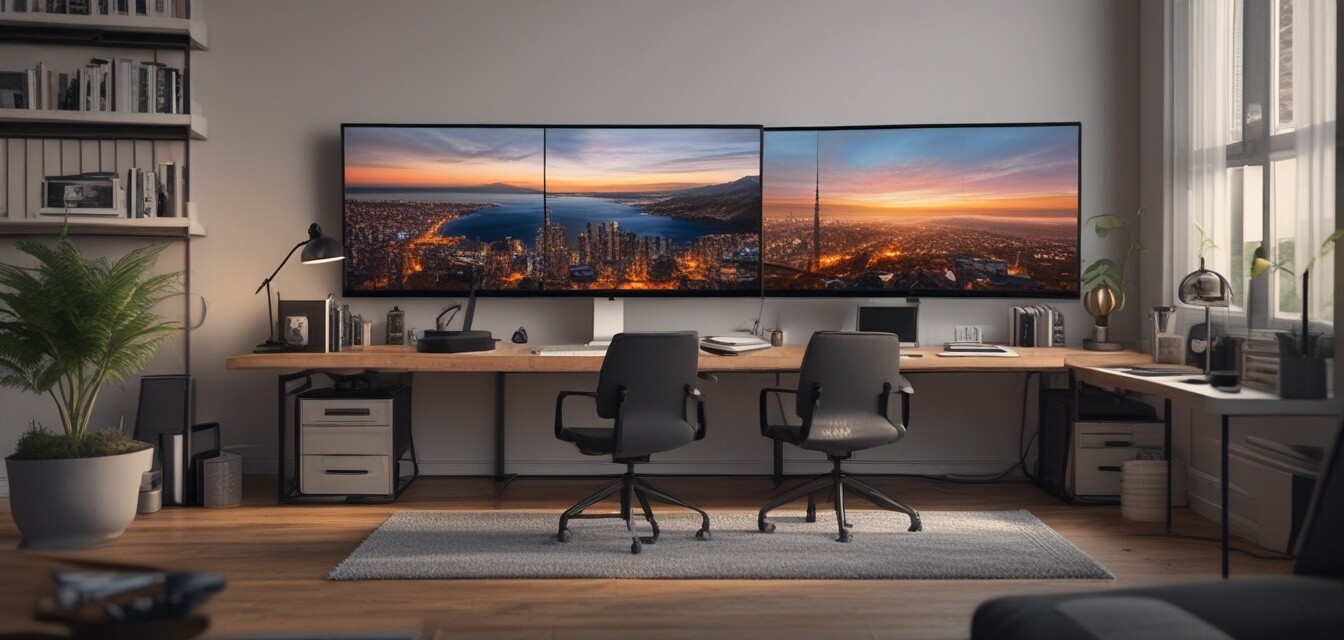
Creating a Home Office Layout for Maximum Efficiency
- Plan your layout around your work habits.
- Incorporate ergonomic furniture to reduce strain.
- Utilize multi-monitor setups for improved productivity.
- Ensure good lighting and cable management.
- Create dedicated zones for tasks to minimize distractions.
Designing a home office that maximizes efficiency is crucial for enhancing your productivity. A carefully considered layout can make a world of difference in how effectively you work. From furniture placement to the integration of technology, this article will explore practical tips and tricks for optimizing your workspace.
Understanding your workspace needs
Before diving into the design process, take a moment to assess your needs and work habits. Consider what tasks you will be performing, how much space you require, and what type of equipment you'll be using. Here are a few factors to consider:
- Work type: Identify the most common tasks to determine your required tools.
- Available Space: Measure your room dimensions to plan accordingly.
- Equipment: Make a list of equipment you need such as computers, printers, and other peripherals.
Furniture selection and layout
A well-furnished office space can enhance both creativity and organization. Consider the following furniture components:
| Furniture Item | Purpose | Considerations |
|---|---|---|
| Desk | Main workspace | Size and height |
| Chair | Comfort during long hours | Ergonomic design |
| Shelves | Storage | Easy access |
| Lighting fixtures | Illumination | Positioning and brightness |
Creating an efficient layout
Once you've selected your furniture, it's time to arrange it effectively. Here are some layout tips:
- Placement: Position your desk facing the entrance to foster a welcoming environment.
- Accessibility: Ensure that everything you need is within arm's reach, including chargers and stationery.
- Ergonomics: Your screen should be at eye level and your chair at a comfortable height.
- Multiple Work Zones: Create areas for different tasks (e.g., a designated reading corner).
Utilizing technology effectively
Incorporating technology in your home office can significantly enhance productivity. Here are some essential tech solutions:
Key technology solutions
- Multi-monitor setups: Use multiple screens for increased visibility and multitasking.
- Docking stations: Keep your workspace tidy with a docking station for laptops.
- Wireless equipment: Reduce clutter by using wireless peripherals.
- Smart lighting: Adjust lighting based on the time of day for optimal visibility.
Implementing network solutions
A strong and reliable internet connection is vital for any home office. Consider the following:
- Router placement: Place your router centrally for optimal coverage.
- Ethernet connection: Use wired connections for high-demand tasks.
- Network tools: Consider powerline adapters to extend your network reach.
Improving ambiance and organization
The atmosphere of your home office can greatly affect your focus and productivity. Here are ideas to enhance your environment:
- Color schemes: Choose colors that promote focus and creativity.
- Indoor plants: Add greenery for aesthetics and air quality.
- Personal touches: Decorate with items that inspire you.
Conclusion
Designing a home office layout for maximum efficiency involves careful consideration of your needs, the right furniture, and effective use of technology. With the right planning and execution, you can create a personalized environment that enhances your productivity and comfort.
Pros
- Improved productivity
- Personalized work environment
- Enhanced comfort and ergonomics
- Better organization and reduced clutter
Cons
- Initial investment costs
- Requires space allocation in the home
- Can be distracting if not well organized
For more tips on enhancing your workspace, check out our other articles on DIY tips and tricks and explore various computer peripherals designed to improve efficiency.